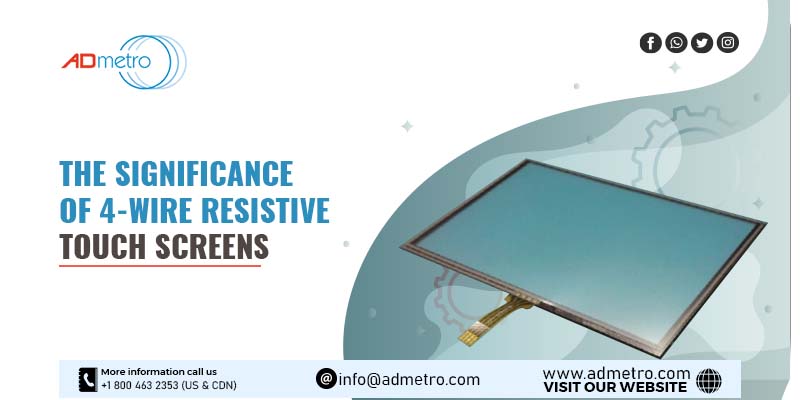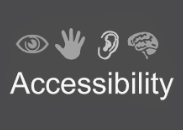Although many advanced touch screen solutions are available in the market, low-cost touch screen applications still integrate 4-wire resistive touch screens. This is the most basic one among the various resistive touch screens. 4-wire resistive touch screens are designed with top and bottom transparent conductive sheets facing each other and separated by a layer of dielectric spacer dots that are not visible to the naked eye. The conductive sheets have uniform resistance values and have voltage applied across the conductive surface.
What happens inside 4-wire resistive touch screens upon touch?
Both layers in 4-wire resistive touch screens have a conductive bus bar placed along two opposite edges. While one layer has bus bars located on top and bottom, bus bars on the other layer, are located on the left and right edges. The controller applies a DC voltage across one of the layers with the positive connection to one bar and the negative connected to the other, creating a voltage gradient through the conductive coating of that layer.
When a touch event occurs, the opposite layer comes in contact with the voltage layer, and the controller uses the opposite layer as a voltage probe to read the voltage at the touch point. The controller then determines whether the touch point is in plane X or Y.
To get to the other plane, the controller flips the functions of the layers so that the same happens but in X rather than Y or vice versa. This flipping of layer functions happens, typically more than 100 times per second, so the X and Y coordinate readings have no lag in reporting.
Applications of 4-Wire Resistive Touch Screens
- 4-wire resistive touch screens are usually preferred for applications that can be operated on very low power. Since this touch screen technology is voltage operated and does not require much current, they are used in portable battery-operated devices.
- This touch screen uses most of the sensor’s surface as the active area where the touch can be sensed. It is helpful for applications where size is very limited, like hand-held devices.
What are the limitations of 4-Wire Resistive Touch Screens?
- Positional Drift in the Touch Point
Since 4-wire is voltage operated, there can be no variance in the electrical properties of the conductive layers, or the buss bars, or the flextail. The voltage reading from X and Y layers will change, causing a positional drift in the touch point.
This is mainly because of the extreme temperature variation as heating and cooling of the sensor from environmental conditions.
Poor Sensor Life
Another major problem with 4-wire resistive touch screens is poor sensor life. Around 4 million touches or less are expected on the same spot with finger operation, which becomes even worse with a stylus. A 4-wire resistive touch sensor can be destroyed by only a few hard strokes of a fine-point stylus. This is due to the brittle ITO made of the polyester switch layer.
How Can A D Metro Help?
However, to overcome the various limitations of traditional resistive touch screen technology, A D Metro offers its patented ULTRA resistive touch screen sensor as the most reliable solution. It combines the characteristics of a durable glass surface with the benefits of a standard resistive touch screen.
A D Metro provides an innovative method called Pen-Based ITO Polyester Film in which Indium Tin Oxide (ITO) is applied over an irregular surface initially coated with polyester. This prevents the usage of an ITO coating that is flat, smooth, and prone to cracking. But an important point to remember is that this technique may greatly improve the issue but does not entirely resolve it.
A D Metro also offers an advanced solution for 4-wire resistive touch sensors with their patented ULTRA resistive touch screen sensors. It combines the advantages of a typical resistive touch screen with the features of a tough glass surface. In 4-wire ULTRA sensors, the life of the sensor is greatly extended because the stiffer surface of the ULTRA glass fronted sensor does not allow the ITO coating to bend sharply enough to crack therefore greatly increasing the operational life of the sensor as well as allowing it to operate in any environmental condition.







